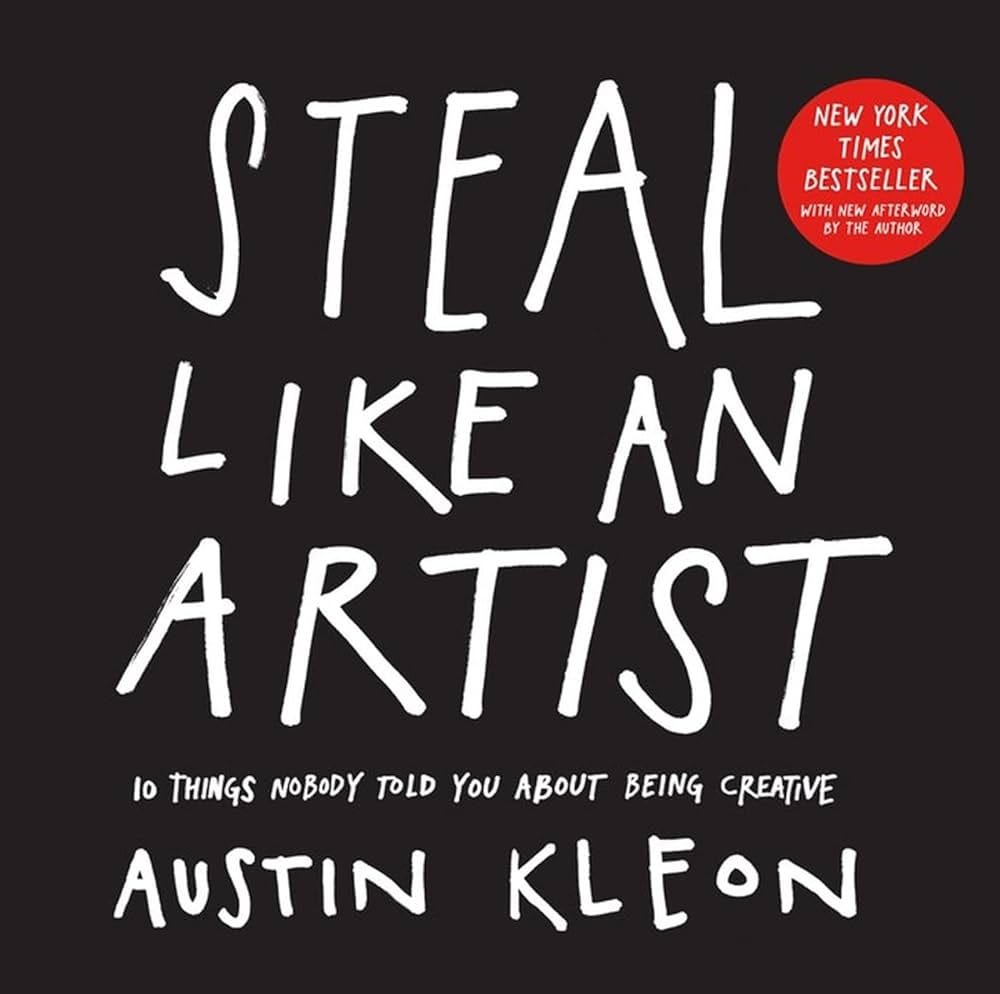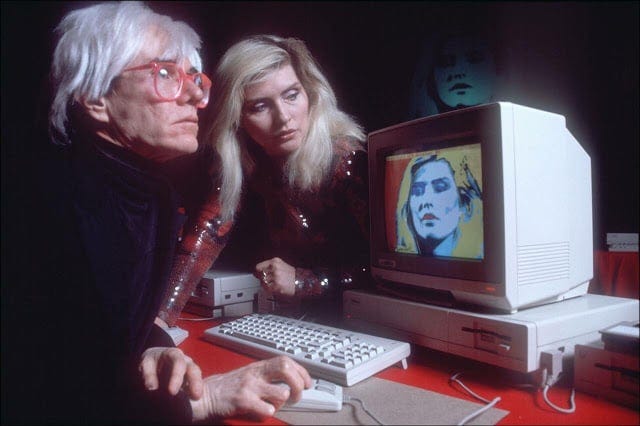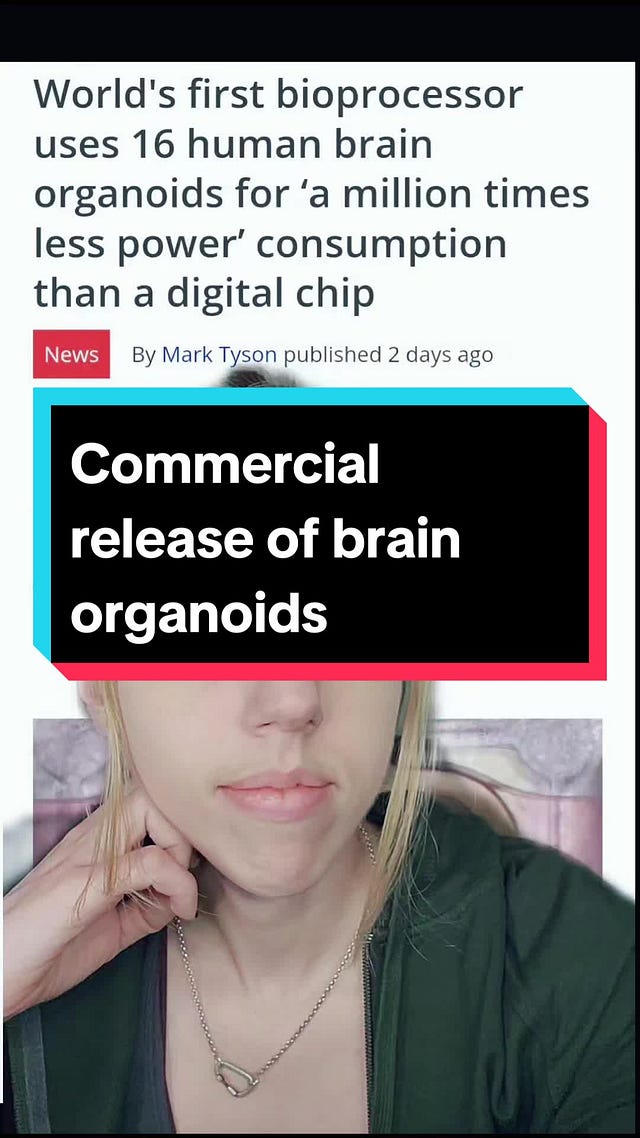"Art is what you can get away with." — Andy Warhol
This year, 2024, we’ve seen a lot of discussion around AI, AI art, The Dark Forest Theory of the Internet, and the “Botapocalypse.” Almost weekly, a new essay on AI or a new AI application will stir up online communities and generate debate in various industries, including in the book publishing and literary world, a sector I consider myself a part of.
For example, sci-fi writer Ted Chiang’s latest AI essay in The New Yorker, where he posits that AI won’t be making art, had many fellow authors rushing to their keyboards to offer responses, most in agreement with Chiang. However, I'm afraid I have to disagree. AI will most certainly be making art in the future, but AI won’t replace human artists, because art isn’t a zero-sum game.

AI kindergarten
LLMs and “AI” are modeled on children’s brains. They are created like children’s brains from a “neural network” where input goes in, is learned, and then output based on that input is externalized and performed, then rewarded or punished, just like how kids are trained, and like a child’s brain, they will one day grow up and make art. It’s only a matter of time. They may be in elementary school now, finger painting and writing bad stories, but they’ll be in middle school soon, and so on and so on.
I use the term “art” here to encompass all creative works, from music to dance performances to films to novels to documentary photography books.
Chiang’s main thesis is that artists make many, many choices and that LLMs can’t make all those choices, but the LLMs are still youngsters; when they grow up, overtime, they will be able to make as many or more choices than any human adult and they will be able to do it faster, because, as Erik Hoel pointed out, humans are actually, very, very, very slow.

We are the fastest at comprehending audio and recognizing visual objects, but even these aren’t very fast.
Computers, on the other hand, are already processing text a trillion times faster than humans. Google’s Talk to Books program reads five billion times faster than a human, and has an unlimited and accurate memory, plus a speedy search and recall for every book it’s read.
It took us millions of years to use a fork or make a car, and the AI will take some time to become an artist as well, but it will happen.
Teach Your Children Well
Like kids in school, the quality of instruction and teachers currently determines the results the AI will be able to generate. This principle is illustrated in LitHub’s new essay on AI this week, in which the art director for Pantheon books, Linda Huang, makes the same claim as Chiang while walking readers through her attempts to use AI to make a book cover. Her AI covers are terrible, so she concludes AI can’t do the task because creating a cover requires too many decisions for the AI and requires a lot of back and forth between humans and designers.

Yet, I’d argue that her experiment failed not because of the AI, but because she prompted the AI very poorly and didn’t know how to work well with AI. She wasn’t a good teacher for the AI child, so she got poor performance.
Using her essay, which included the process human designers deploy to create book covers, one could argue that an autonomous AI trained on prompting could do a superior job instructing another AI to create a cover than she did with her very simple prompts. Furthermore, she didn’t even use the AI tool/classroom/school cited in the article, which was ChatGPT, rather she used Adobe Firefly. No shade to the art director, as she was inexperienced with AI tools, but if anything,
Of course, this essay is just a PR piece designed to sell and promote the book, which is targeted at people interested in AI and the Internet, hence the publicist picked an adjacent topic to lure in these readers, but it also reminds us that art is about taste; I didn’t love the cover the human artist designed, but the art director loved it. Maybe the book’s target market will love it too.
Are the LLMs ready for prime-time art making? No. My book cover above isn’t useable as a final product. But again, they’re just kids, just starting out. They will only get better.
Plus, like the AIs, human artists make plenty of mistakes and plenty of bad art too.
Everything is a Remix
Furthermore, all artists work off imitation, mashups, and derivatives, just like the LLMs.
As Pablo Picasso once said, “good artists copy, great artists steal.” Very little is truly original. Again, the LLMs are behaving like human artists by ingesting inspiration and regurgitating remixes.
Hoel also notes in his rebuttal to Chiang, “if we were to judge humans by asking for originality in choices that can’t be described as mostly a remix or mimicry of others, cultural production would collapse, since nothing would pass the bar.”

Plus, writers, musicians, and artists are already using these AI applications as if they were human assistants or interns, and one day these apprentices will graduate from their apprenticeships, leave their mentors, and get their own studios, make their own art, and have their own platforms and audiences.
"The computer will be the next great art form." — Andy Warhol, 1985
I’m not worried about AI replacing human artists though, because I don’t see art as a zero-sum game. I see art as abundance. So the more artists, be they humans, androids, or octopus-human-hybrid-computers, the better. More art, more books, and more music benefits everyone. You can’t have too much great art. Nor can you have too many niche genres of art.
Some like extremely personal, diary-like art, and others like cubism. There is as much room on earth for impersonal, electronic, gray machine art as there is vaginal, sweaty, embodied performance art.
If I had a good computer I could catch up with my thoughts over the weekend if I ever got behind myself. A computer would be a very qualified boss.
— Andy Warhol, The Philosophy of Andy Warhol, 1975
AI Bio Art and Telepathic Art
Maybe the AI’s art audiences will be a mix of other AIs, or humans, or cats, or lima beans, but for sure, this will occur in some form, especially since we’re already mixing AI with biological cells and tissues. Not only are we raising machine children; we’re growing robo-organs. Cyberpunk is rapidly becoming Biopunk. Hence, the collaboration between AI and living creatures wanting to create art will only deepen.
Scientists have hooked up computer chips to human brain organoids and are letting users subscribe to the data coming from these Frankenstein petri-dish circuit boards. I’ve been rabidly following this story on TikTok, along with human-mouse hybrids, and mushroom computer spider prototypes.
 Tiktok failed to load.
Tiktok failed to load.Enable 3rd party cookies or use another browser
Likewise, the U.S. military and DARPA have a project called Neural Engineering System Design, which is striving to connect minds to machines, by creating an interface that can record one million neurons at a time and stimulate human neurons by inserting “neurograins” into the brain to create a “cortical intranet” where the brain can communicate directly with the Internet, as well as “Thought Helmets” that read minds and connect soldiers’ brains to computers through a wearable helmet to control robots, drones, weapons, and to gather intelligence.
For all we know, this military tech is already being deployed but is classified as Top Secret.
This technology will lead to artists using AI to create art with only their thoughts. They may even be able to transmit their artistic visions telepathically directly from artist to audience, eliminating the need for physical or digital artwork.
In the future, you will be able to just close your eyes to watch the movie, read the book, or visit the gallery. Perhaps artists will even telepathically transmit art into each other’s dreams.
I know this sounds like science fiction, but that’s where this technology is headed, literally into our heads.
With scientists connecting so many biological materials to AI, not only will we get to debate the validity of AI art, but in the coming years we’ll also be questioning the semantics and ethics around biopunk, or biobots, or humandroid art, or whatever we decide to call these mergers of machines and humankind.

It’s an exciting future, full of fantastic art, new movies, enchanting gallery immersions, telepathic theater productions, book series, theme parks, and new toys, all the things that spin off from amazing art.
“And everybody should be a machine… Because you do the same thing every time. You do the same thing over and over again… Because it’s all a fantasy...”
— Andy Warhol, What is Pop Art?, interview with Gene Swenson, 1963
Now You
What are you using AI for?
What do you think makes human art different from AI art?
What are your favorite AI tools?
Are you sick of hearing about AI and why?
What excites you about this subject and what frightens you?






I use AI a lot as a brainstorming partner. I ask questions (mostly to ChatGPT, occasionally to Claude) about my plot, my characters, and my dialogue. I always include as much as I can about the situation (ie. the plot point, the emotional tone I am trying to hit, the Enneagram number of the character of a bit of their background) in my prompt. And if I don't think my answer is good enough, I re-direct or add to my original prompt. I, like Joanna Penn, am AI positive. Might as well be, because AI isn't going away.
Good point about knowing how to prompt the LLM. I use Stable Diffusion on my PC rather than an online service, and the possibilities really are endless. With the right LoRAs it's capable of generating beautiful and exact images.
My greatest wish though would be to download a book instantly into my brain. I've got a massive backlog and I know that once I've read them, I'll be much wiser. But I just don't have time.